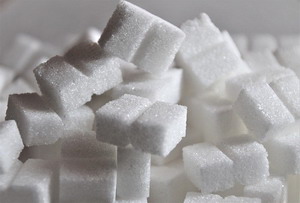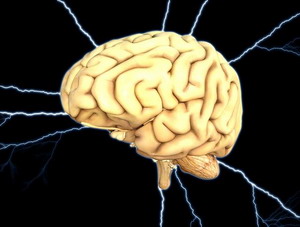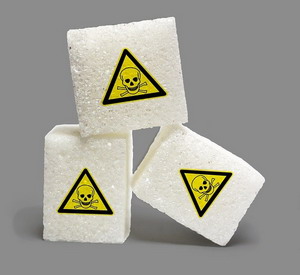 What do fatigue, dizziness, irritability, insomnia, excessive sweating, poor concentration, forgetfulness, excessive thirst, depression, anxiety, aggressiveness, crying spells, mood swings, and blurred vision all have in common? They are all symptoms of blood sugar imbalances. Specialists say that poor blood sugar issues are the single biggest factor in mood disorders in patients. Back when I was in school, I knew of one doctor that was able to reduce the resident population of one mental hospital by 50% simply by balancing the blood sugar levels of the patient population. Independent clinicians all over the country have been pointing out the dangers of sugar consumption for over 100 years, but the mainstream media and industry-controlled Food and Drug Administration have been telling us that we need sugar. Sugar is for quick energy and to make our brains function properly. They have told us this for the last 70 years. Well, “ they” have been lying to us.
What do fatigue, dizziness, irritability, insomnia, excessive sweating, poor concentration, forgetfulness, excessive thirst, depression, anxiety, aggressiveness, crying spells, mood swings, and blurred vision all have in common? They are all symptoms of blood sugar imbalances. Specialists say that poor blood sugar issues are the single biggest factor in mood disorders in patients. Back when I was in school, I knew of one doctor that was able to reduce the resident population of one mental hospital by 50% simply by balancing the blood sugar levels of the patient population. Independent clinicians all over the country have been pointing out the dangers of sugar consumption for over 100 years, but the mainstream media and industry-controlled Food and Drug Administration have been telling us that we need sugar. Sugar is for quick energy and to make our brains function properly. They have told us this for the last 70 years. Well, “ they” have been lying to us.
 US sugar consumption has risen steadily since the mid-1800s. Back then we consumed about 10 lbs of sugar per year. That level hit 100 lbs per year per person by 2012. When you look at charts of the increasing levels of obesity, diabetes, and hospital expenditures, the upward slope of the graph exactly matches the rise in sugar consumption. Back in 2000 at the urging of the sugar industry, the FDA changed how it counted sugar consumption in an attempt to make it look like we had slowed down our sugar usage, but astute individuals caught the trick and made the public aware that we are still using more sugar every year. The sugar industry lobbyists were concerned that the public might associate the rise in sugar consumption with the rise in obesity and diabetes.
US sugar consumption has risen steadily since the mid-1800s. Back then we consumed about 10 lbs of sugar per year. That level hit 100 lbs per year per person by 2012. When you look at charts of the increasing levels of obesity, diabetes, and hospital expenditures, the upward slope of the graph exactly matches the rise in sugar consumption. Back in 2000 at the urging of the sugar industry, the FDA changed how it counted sugar consumption in an attempt to make it look like we had slowed down our sugar usage, but astute individuals caught the trick and made the public aware that we are still using more sugar every year. The sugar industry lobbyists were concerned that the public might associate the rise in sugar consumption with the rise in obesity and diabetes.
 Here is the hardcore reality, sugar is an inflammatory chemical. There is zero need for sugar or carbohydrates in the diet, period. There are no essential carbohydrates or sugars. Our body can make any it needs from proteins and fats. Sugar is so inflammatory that we have all sorts of mechanisms built into our bodies to try to get rid of it as quickly as possible. Mostly we turn it into fat and store it wherever it will look the worst. What is not converted to fat, we burn in the mitochondria in each cell to turn into energy. Since it is so toxic, the mitochondria will burn it first and fast so none will be hanging around. Sugar that hangs around binds to the cell’s proteins and lipids, inactivating them so they can’t do their jobs. This is called glycation and produces what is called AGE. AGE stands for Advanced Glycation Endproducts, but interestingly these are one of the main reasons for our aging. They give us such joys as sagging skin, neuropathy, atherosclerosis, and dementia.
Here is the hardcore reality, sugar is an inflammatory chemical. There is zero need for sugar or carbohydrates in the diet, period. There are no essential carbohydrates or sugars. Our body can make any it needs from proteins and fats. Sugar is so inflammatory that we have all sorts of mechanisms built into our bodies to try to get rid of it as quickly as possible. Mostly we turn it into fat and store it wherever it will look the worst. What is not converted to fat, we burn in the mitochondria in each cell to turn into energy. Since it is so toxic, the mitochondria will burn it first and fast so none will be hanging around. Sugar that hangs around binds to the cell’s proteins and lipids, inactivating them so they can’t do their jobs. This is called glycation and produces what is called AGE. AGE stands for Advanced Glycation Endproducts, but interestingly these are one of the main reasons for our aging. They give us such joys as sagging skin, neuropathy, atherosclerosis, and dementia.
 We are just scratching the tip of the sugar iceberg. Sugar directly stimulates the same brain reward centers as Crack and cocaine. Sugar is actually more addictive than either of these. And yes, you go through withdrawal when you quit sugar cold turkey. Sugar is a drug; the most actively consumed drug in the world. Most humans have no idea what life feels like without sugar in their system. It hides in everything because food manufacturers found out a long time ago that the more sugar you put in a product, the better it sells. It hides under dozens of names. I have read the ingredient labels of some products and seen seven of the first ten ingredients are various names for sugar.
We are just scratching the tip of the sugar iceberg. Sugar directly stimulates the same brain reward centers as Crack and cocaine. Sugar is actually more addictive than either of these. And yes, you go through withdrawal when you quit sugar cold turkey. Sugar is a drug; the most actively consumed drug in the world. Most humans have no idea what life feels like without sugar in their system. It hides in everything because food manufacturers found out a long time ago that the more sugar you put in a product, the better it sells. It hides under dozens of names. I have read the ingredient labels of some products and seen seven of the first ten ingredients are various names for sugar.
 The combination of the inflammatory toxicity and the addictive nature of sugar makes it a huge problem for the brain and body. Because we have to get rid of sugar as fast as possible, the brain gets wired into using sugar as its main energy source. The brain uses more energy than any other organ in the body. Unlike fat, which we store for later or lean times, the body does not store more than a few hours of sugar for energy. That makes the brain really susceptible to insufficient energy at times when our blood sugar drops for various reasons. One of the main ways sugar affects our moods is low blood sugar episodes. Whenever we get stressed, adrenaline pushes the blood sugar into our muscles to support running or fighting. This causes a low blood sugar episode. It takes several days to switch our brains over to using fats for energy. This makes our brain ride a mood roller coaster when blood sugar availability varies. These swings can happen as quickly as every 20 minutes for someone who has unstable blood sugar. This stability is supposed to be managed by the liver, but a lot of people have lost this fine-tuning control simply because of too much sugar consumption overwhelming the system. Working with liver-based blood sugar control has been a big part of my practice for many years. I leave the chronic high blood sugar of diabetes to the medical docs. That is a different kind of issue than the short-term swings that affect mood so regularly.
The combination of the inflammatory toxicity and the addictive nature of sugar makes it a huge problem for the brain and body. Because we have to get rid of sugar as fast as possible, the brain gets wired into using sugar as its main energy source. The brain uses more energy than any other organ in the body. Unlike fat, which we store for later or lean times, the body does not store more than a few hours of sugar for energy. That makes the brain really susceptible to insufficient energy at times when our blood sugar drops for various reasons. One of the main ways sugar affects our moods is low blood sugar episodes. Whenever we get stressed, adrenaline pushes the blood sugar into our muscles to support running or fighting. This causes a low blood sugar episode. It takes several days to switch our brains over to using fats for energy. This makes our brain ride a mood roller coaster when blood sugar availability varies. These swings can happen as quickly as every 20 minutes for someone who has unstable blood sugar. This stability is supposed to be managed by the liver, but a lot of people have lost this fine-tuning control simply because of too much sugar consumption overwhelming the system. Working with liver-based blood sugar control has been a big part of my practice for many years. I leave the chronic high blood sugar of diabetes to the medical docs. That is a different kind of issue than the short-term swings that affect mood so regularly.
 Another angle on this sugar and brain connection has been recently discovered with the greater understanding of the microbiome in our guts. Sugar makes our guts grow bad bacteria. In fact, a very new study found that in a healthy sugar-free gut that only two days of eating sugar is enough to cause the bad guy bacteria to push out the good guys. These bad guy bacteria produce inflammatory cytokines that trigger brain inflammation and depression as a result. They also trigger such lovely conditions as inflammatory bowel disease. Wow – just two days of sugar is all it takes to mess us up! These bad guy bacteria also produce something called LPS on their outer cell walls which break off and get drawn into the gut wall and blood system. LPS triggers a massive immune reaction as the gut immune system thinks it is being attacked by the bad bacteria. The resulting inflammatory chaos produces a leaky gut and lots of other large undigested proteins from other foods entering the gut bloodstream where they don’t belong. The immune system now attacks these foreign proteins and remembers them as enemies. We have just developed a food sensitivity as a result. Sugar is bad stuff.
Another angle on this sugar and brain connection has been recently discovered with the greater understanding of the microbiome in our guts. Sugar makes our guts grow bad bacteria. In fact, a very new study found that in a healthy sugar-free gut that only two days of eating sugar is enough to cause the bad guy bacteria to push out the good guys. These bad guy bacteria produce inflammatory cytokines that trigger brain inflammation and depression as a result. They also trigger such lovely conditions as inflammatory bowel disease. Wow – just two days of sugar is all it takes to mess us up! These bad guy bacteria also produce something called LPS on their outer cell walls which break off and get drawn into the gut wall and blood system. LPS triggers a massive immune reaction as the gut immune system thinks it is being attacked by the bad bacteria. The resulting inflammatory chaos produces a leaky gut and lots of other large undigested proteins from other foods entering the gut bloodstream where they don’t belong. The immune system now attacks these foreign proteins and remembers them as enemies. We have just developed a food sensitivity as a result. Sugar is bad stuff.
 Over 100 years ago severe brain inflammation that caused seizures were treated with a diet of 90% fats and 10% protein – notice 0% sugar or carbohydrates. This protocol worked to control the seizures but was very boring to eat. The modern version of this diet is called the ketogenic diet. I have been living a ketogenic lifestyle for over 15 years about 90% of the time. If you have any sort of autoimmune or brain issues or metabolic syndrome, I highly recommend this type of diet. Living this life is much easier than it was back in the days of 90% fat and 10% protein. Now the goal is simply to not eat more than 20 to 50 grams of carbohydrate per day. I suggest starting with 20 grams of carbohydrate per day for a few weeks and then slowly building up to the 50 carbohydrate per day.
Over 100 years ago severe brain inflammation that caused seizures were treated with a diet of 90% fats and 10% protein – notice 0% sugar or carbohydrates. This protocol worked to control the seizures but was very boring to eat. The modern version of this diet is called the ketogenic diet. I have been living a ketogenic lifestyle for over 15 years about 90% of the time. If you have any sort of autoimmune or brain issues or metabolic syndrome, I highly recommend this type of diet. Living this life is much easier than it was back in the days of 90% fat and 10% protein. Now the goal is simply to not eat more than 20 to 50 grams of carbohydrate per day. I suggest starting with 20 grams of carbohydrate per day for a few weeks and then slowly building up to the 50 carbohydrate per day.
 One thing that has made this lifestyle more enjoyable is the use of certain sweeteners that do not get processed as sugars in the body. Last week I was investigating the effect of these sweets on the microbiome composition, and the good news was that the sweeteners I use, stevia, erythritol, and allulose all enhance microbiome diversity (a good thing) and favor the growth of the good guy bacteria. Bad choices for sweeteners are artificial sweeteners like aspartame, aceK, and Splenda as they actually promote inflammatory bacteria. Other sugar alcohols like maltitol still get metabolized into a fair amount of sugar, plus typical sugar alcohols do not absorb well and can cause loose bowels. This is not a concern for erythritol as 90% of it is absorbed and dumped unchanged through the kidneys. Curiously, the liver actually manufactures erythritol for some reason not yet understood.
One thing that has made this lifestyle more enjoyable is the use of certain sweeteners that do not get processed as sugars in the body. Last week I was investigating the effect of these sweets on the microbiome composition, and the good news was that the sweeteners I use, stevia, erythritol, and allulose all enhance microbiome diversity (a good thing) and favor the growth of the good guy bacteria. Bad choices for sweeteners are artificial sweeteners like aspartame, aceK, and Splenda as they actually promote inflammatory bacteria. Other sugar alcohols like maltitol still get metabolized into a fair amount of sugar, plus typical sugar alcohols do not absorb well and can cause loose bowels. This is not a concern for erythritol as 90% of it is absorbed and dumped unchanged through the kidneys. Curiously, the liver actually manufactures erythritol for some reason not yet understood.
 The one thing I miss the most about this style of eating is most fruit. Modern fruit has been hybridized into tree candy. It now has 10 times the sugar and 1/10th the vitamins that it had a couple of hundred years ago. Throughout most of human history, the only sources of sweetness were grapes, dates, and honey. Historically our ancestors generally liked to turn whatever sweetness they could find into alcoholic beverages – generally beer, mead, and wine. Water quality was generally suspect and the only safe thing to drink was these antiseptic-filled drinks. That said, I am a product of the modern sugar babies generation and love the taste of good fruit. These days I am satisfied eating low-carb fruit such as berries. It is a very doable lifestyle and it is much better supported today than it was many years ago. Shopping options are much easier.
The one thing I miss the most about this style of eating is most fruit. Modern fruit has been hybridized into tree candy. It now has 10 times the sugar and 1/10th the vitamins that it had a couple of hundred years ago. Throughout most of human history, the only sources of sweetness were grapes, dates, and honey. Historically our ancestors generally liked to turn whatever sweetness they could find into alcoholic beverages – generally beer, mead, and wine. Water quality was generally suspect and the only safe thing to drink was these antiseptic-filled drinks. That said, I am a product of the modern sugar babies generation and love the taste of good fruit. These days I am satisfied eating low-carb fruit such as berries. It is a very doable lifestyle and it is much better supported today than it was many years ago. Shopping options are much easier.
 The bottom line is sugar in all its forms is poison for our brain and body. It messes up our moods and ability to think. It, along with seed oils, is responsible for the massive flood of degenerative diseases we are encountering these days. Moving over to a diet of healthy pasture-raised meats and organic low-carb vegetables with a few nuts and berries thrown in for variety is probably the most healthful shift most of you can make for your body. I suspect that about 10 to 20% of you would do better with a low glycemic, high complex carbohydrate diet that included no sugar or vegetable oils. Some people are just built for carbs. These are the people that are perpetually thin with high energy. Those that are not built for speed do better with the ketogenic type of diet.
The bottom line is sugar in all its forms is poison for our brain and body. It messes up our moods and ability to think. It, along with seed oils, is responsible for the massive flood of degenerative diseases we are encountering these days. Moving over to a diet of healthy pasture-raised meats and organic low-carb vegetables with a few nuts and berries thrown in for variety is probably the most healthful shift most of you can make for your body. I suspect that about 10 to 20% of you would do better with a low glycemic, high complex carbohydrate diet that included no sugar or vegetable oils. Some people are just built for carbs. These are the people that are perpetually thin with high energy. Those that are not built for speed do better with the ketogenic type of diet.
Well, keeping your brain happy and healthy is, in my opinion, the most important thing you can do. Without that, you can not enjoy life.
Take care,
David
